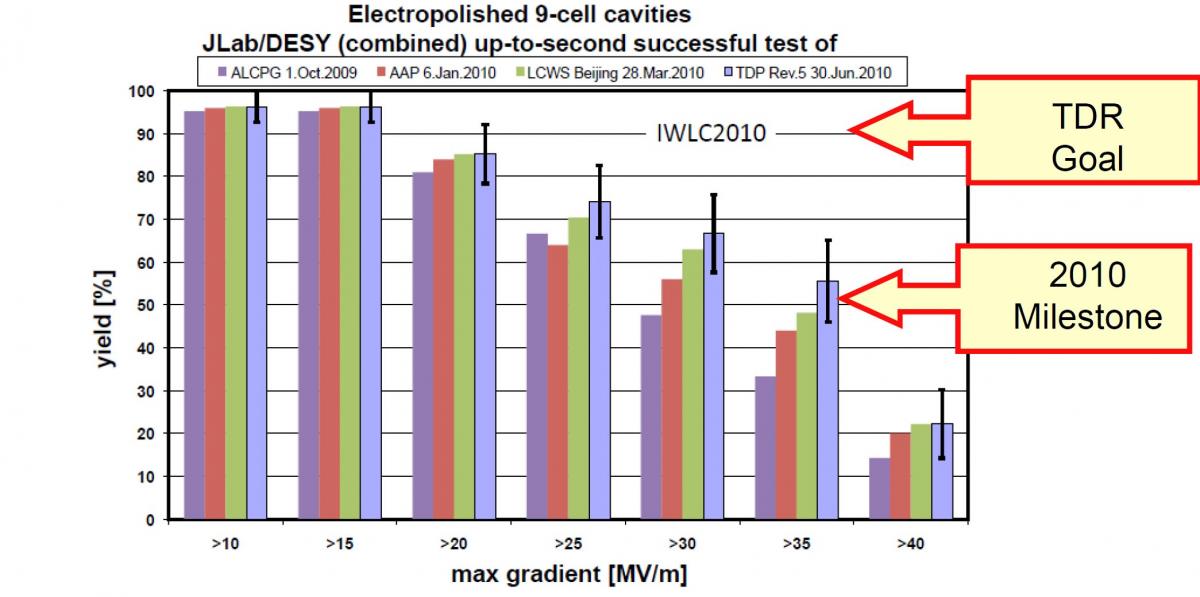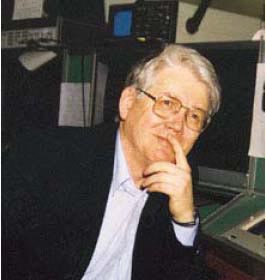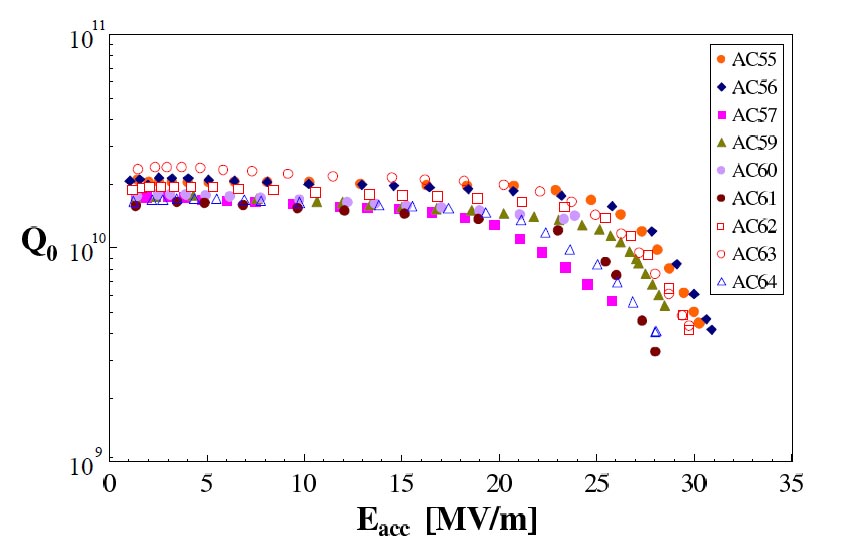Director's Corner
4 November 2010
 Barry Barish |
Cavity gradient milestone achieved
One of our most visible and important ILC R&D short-term milestones has been to demonstrate production of ILC superconducting radio frequency cavities with gradient of greater than or equal to 35 megavolts per metre (MV/m) and Q0 = 8×109 and 50 percent production yield. (Q0 is the quality factor of a cavity, where a higher Q indicates a lower rate of energy loss relative to the stored energy.) Results from our cavity R&D that have recently been presented at the Baseline Assessment Workshop and at IWLC2010 are consistent with this goal, and consequently today I announce the successful achievement of that important 2010 milestone. The achievement of this gradient goal, set three years ago, is particularly noteworthy because it represents a significant step towards practically being able to produce high-gradient cavities that meet the ambitious ILC requirements.
 Production yields of ILC cavities, where most recent data proves that the ILC milestone of 50% yield for cavities was achieved Production yields of ILC cavities, where most recent data proves that the ILC milestone of 50% yield for cavities was achieved |
In a visionary paper published in Il Nuovo Cimento (vol. XXXVII, no. 3) 1965, entitled “A Possible Apparatus for Electron Clashing-Beam Experiments,” Maury Tigner put forward the idea of developing superconducting RF for this application. He said,
...by the introduction of superconducting accelerator sections one may avoid the high power necessary to establish the accelerating field. With this technique one might hope to achieve an energy gain of about 11 MeV per meter.
Many applications have followed, some with gradients exceeding Tigner's projections. Important implementations in recent years include the installation of 500 metres of superconducting cavities in the Large Electron Positron Collider (LEP) at CERN and a programme at JLab to develop high-gradient cavities and cryomodules, which have led to a programme to upgrade the energy of the Continuous Electron Beam Accelerator Facility (CEBAF) from 6.5 to 12 giga electronvolt.
The idea and the impetus for developing high-gradient superconducting radiofrequency (RF) technology for a TeV(teraelectronvolt)-scale electron-positron colliding-beam facility were put forward by the late Bjorn Wiik in Nuclear Instruments and Methods in Physics Research A 398 (1997) 1-17. In this article, Wiik stated, “Based on the steady progress in the performance of superconducting cavities with accelerating gradients of order 40 MV/m will be at hand.” This led to a very successful R&D programme for the TESLA proposal, as illustrated in the figure. This work provided the basis for a decision to base the ILC on superconducting RF and we have continued the pursuit of developing high-gradient cavities, especially including electropolishing (which I will discuss in a separate column) and many diagnostic tools. We have not quite reached Bjorn's projection for production cavities, but we are coming close.
The primary ILC R&D goal remains the demonstration of a field gradient greater than or equal to 35 MV/m at Q0 = 8×109, which we believe is realistic and should enable operating cryomodules at a gradient of 31.5 MV/m. I should emphasise that we still have the challenge of increasing our production yield to 90% by the end of 2012. The interim goal of 50% yield for 2010 was meant to demonstrate the reality of our eventually reaching that final goal, but it will require understanding detailed processing and production processes and making sure they are consistently employed.
To achieve the 2010 goal, we needed to develop a consistent scheme for treating the test data and we now have established a consistent protocol for all the participating labs. This has resulted in a common ILC cavity database for test data coming from Cornell, DESY, Fermilab, JLab, and KEK. This unified database is providing estimates of production yield, including studying the cavity fabrication and processing information and test result data from each of the participating labs.
Developing high-gradient superconducting cavities is a central goal of ILC R&D. The cavity gradient directly determines the number of cryomodules required, the length of the machine and the cost. We have a challenging task before us to bring this yield to 90% by the end of 2012 when we complete the Technical Design Report, but with the positive recent result, that goal appears reachable. This will not be the end of the story, as we get to know ways in the longer term to improve the cavity gradient further. That will be a focus of research beyond 2012 and, we hope, will lead to an increased gradient for the 1-TeV upgrade and, more generally, for a broad range of applications that will benefit from the development of high-gradient superconducting cavities.
I want to end by giving my thanks and commending all of those involved in our high-gradient cavity R&D. Thanks for a job well done in achieving this important milestone.
-- Barry Barish

